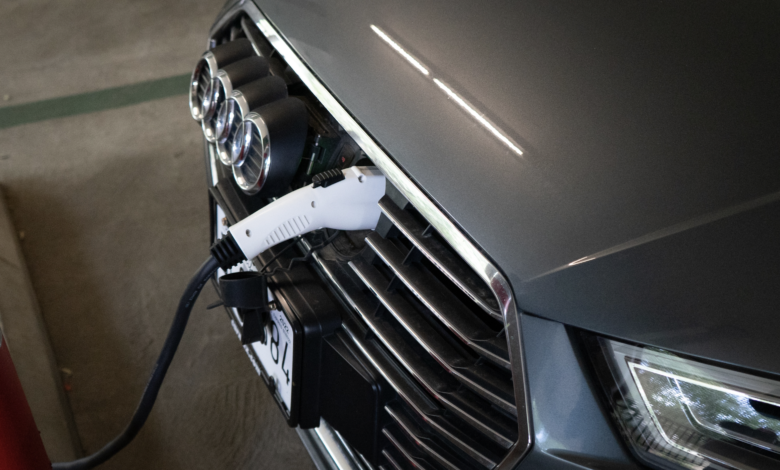
As more electric vehicles join our roads, the energy infrastructure powering them needs to be smart. A smart grid manages power inputs and outputs to optimise capacity and distribution. This management relies on connectivity, with internet of things (IoT)-enabled devices providing information for monitoring and remote management. As the rollout of electric vehicle (EV) charge points ramps up, connectivity will provide operators with data to help them understand load on the network and to support the maintenance of EV infrastructure.
What is the smart grid?
Energy generation, storage and distribution is changing. Fossil fuel use is diminishing; renewable energy solutions are growing. The new energy infrastructure comprises solar and wind farms, battery storage, smart meters, a smart grid and more.
The smart grid is more intelligent than the traditional grid, it can be more dynamically managed to meet power demand as it rises and falls and to distribute energy more efficiently. IoT technology underpins the flexibility of a smart grid, providing data from devices that manage and monitor energy generation, storage and distribution.
What do electric vehicles contribute to the smart grid?
More electric vehicles on the roads will present a load-balancing challenge for energy service providers. Monitoring installed charge points enables operators to understand the load they place on the network. Without visibility, there is no control. The risk of power outages must be averted and for that, fluctuations must be managed, and power surges prevented.
By connecting devices, service providers can monitor their operational performance and control these remote assets to determine when EVs are charging, predict busier charging times and when to schedule charging cycles.
EV charge points form part of a transformed energy infrastructure that is more efficient, more sustainable and more resilient. Ofgem predicts electric vehicle batteries, heat pumps and other devices could deliver savings up to £4.7bn by the end of this decade. The savings would come from using infrastructure efficiently, including by sending electricity back into the grid when it is needed.
This capability of EV charging infrastructure to feed energy back into the grid has been tested through vehicle-to-grid charging. It has the potential to help address power imbalances as part of a connected, intelligent energy ecosystem.
EV charge point monitoring also equips operators with performance data so they can act proactively and swiftly to ensure equipment is kept in good working order. The success of this will help ensure that drivers arriving at charge points will be confident they will be working and will provide the level of service they want.
Electric vehicles and infrastructure
The Department of Transport recently announced a £56 million investment to boost electric vehicle charge points across the UK. The funding will support the short-term installation of 2,400 charge points and tens of thousands more delivered by local councils in the longer term.
An EV rollout commitment is essential to deliver sustainable energy goals, the reduction of carbon emissions and future smarter energy. However, charge point availability must meet the demands of EV sales. Unfortunately, the rollout has been hampered by planning constraints, installation costs and access issues. Fewer than 9,000 were installed in the UK last year, bringing the total installed base to under 40,000, against an expectation of 300,000 charge points by 2030.
EV charge points are set to become part of critical national infrastructure. They must be available, operational and, crucially, secure. When customers use them, they need confidence that their data is securely captured and used.
How the IoT connects electric vehicle charge points
IoT cellular connectivity has a central role to play in ensuring the EV ecosystem runs smoothly. EV charging networks must be connected for performance monitoring, hardware maintenance and usage management. For this, equipment managers and charge point operators need secure, resilient and reliable connectivity.
Cellular meets these needs without the disruption of cabling to connect charge points. This supports companies in deploying at scale without communications infrastructure as a limiting factor.
A range of cellular technology standards provide connectivity choice to suit speed, latency and other requirements. This makes cellular a flexible choice to suit an entire installed base of devices, across the country and beyond.
Importantly, connected EV infrastructure must be secure at every stage because any security breach could cause network disruption and data loss, with financial and reputational consequences. In this, there are compliance standards for EV charge points and the central management system.
Security AI and automation needs to play a bigger role in the grid. A few of the more advanced providers offer solutions like secure private networking, build in identity and authentication techniques and automated anomaly detection to help minimise ransomware and cyber-attacks. While people and processes remain one of the biggest security risks, the role played by those kinds of technologies is increasingly critical.
Energy infrastructure is transforming from systems dependent on fossil fuels to cleaner forms of power. A smart grid supports intelligent capacity management and grid balancing for energy generation, distribution and storage. Cellular IoT connectivity helps connect, control and secure electric vehicle charge points to meet the ever-growing demand of the EV market and contribute to a future energy ecosystem that has resilience, sustainability and intelligence built in.





